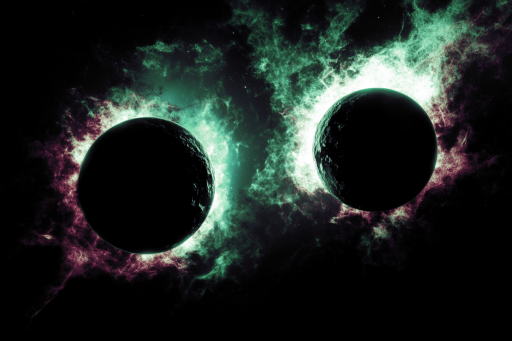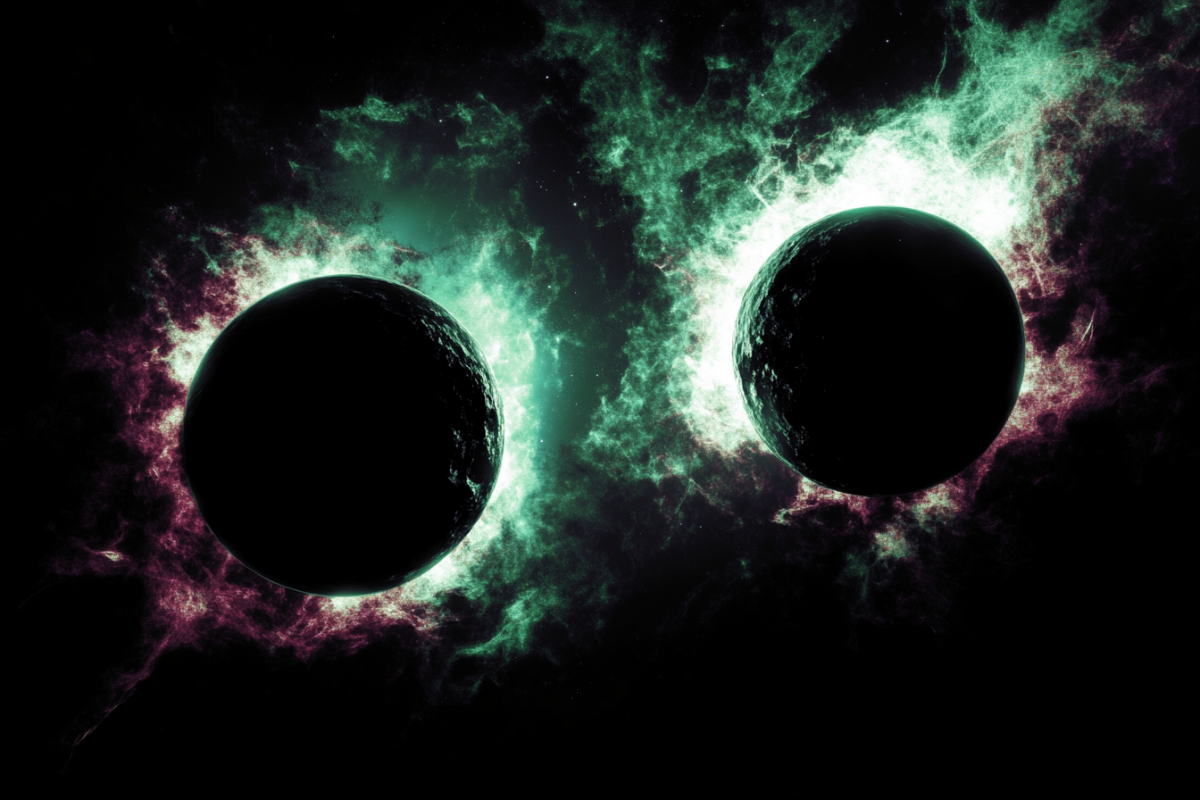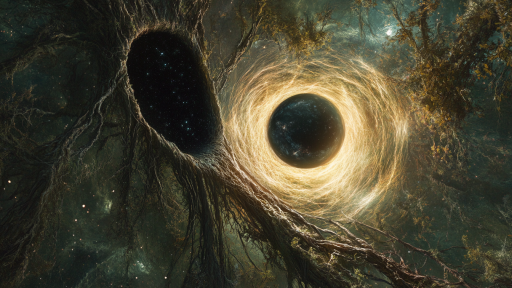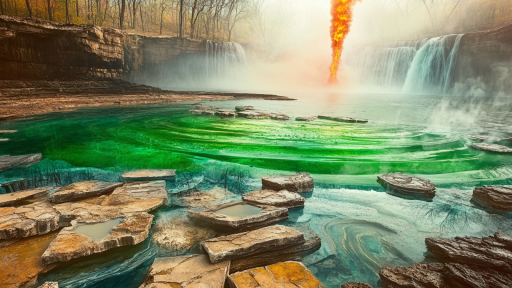
The universe is full of cosmic events so rare that witnessing just one could reshape our understanding of space. Some of these phenomena occur once in a lifetime, while others take billions of years to unfold. Whether they reveal hidden laws of physics, challenge current theories, or hint at unknown forces, these extraordinary events remind us that the universe is far more mysterious than we ever imagined. What else is waiting to be discovered among the stars?
A Star Being Swallowed by a Black Hole – The Ultimate Cosmic Feast

Occasionally, astronomers witness a black hole consuming an entire star, a process known as a tidal disruption event. As the star gets too close, intense gravitational forces rip it apart, creating a bright flare of energy visible across galaxies. Recent observations have revealed that some of these flares repeat, suggesting that in rare cases, a black hole only partially consumes the star, leaving part of it intact. These events provide a unique glimpse into the extreme physics of black holes.
The Birth of a Magnetar – A Star’s Final, Explosive Transformation

When massive stars collapse, they sometimes form magnetars—neutron stars with magnetic fields a quadrillion times stronger than Earth’s. These cosmic dynamos emit bursts of high-energy radiation, occasionally disrupting radio signals across galaxies. The exact process behind their formation remains a mystery, and detecting one in real-time would be a major breakthrough in understanding extreme magnetism.
A White Hole – The Opposite of a Black Hole?

Theoretically, a white hole is the opposite of a black hole—a region of space that can only expel matter, never consume it. While no white hole has ever been observed, some scientists speculate that they could exist in distant regions of space or as the end result of black hole evaporation. If one were found, it would force physicists to reconsider everything they know about space-time and relativity.
A Kilonova – When Two Neutron Stars Collide

When two neutron stars spiral into each other, they create a kilonova—a short-lived but incredibly powerful explosion that releases gold and other heavy elements into space. These rare collisions produce gravitational waves that ripple across the universe, allowing scientists to study the very fabric of space-time. The discovery of kilonovas has revolutionized our understanding of how elements are formed, proving that some of Earth’s gold originated in these stellar events.
The Discovery of a Wandering Black Hole

Most black holes remain hidden within galaxies, but occasionally, astronomers detect one moving freely through space. These rogue black holes form when galaxies collide, ejecting their central black holes into intergalactic space. Observing one in real-time would confirm theories about galaxy evolution and the violent dynamics of the cosmos.
A Supernova That Explodes More Than Once

Supernovae are the dramatic deaths of massive stars, but in rare cases, some stars explode multiple times before finally collapsing. Known as pulsational pair-instability supernovae, these eruptions occur when a star is so massive that it undergoes repeated bursts of fusion, blowing off layers of material before its final explosion. These events challenge conventional models of how stars die and could redefine our understanding of stellar life cycles.
The Merging of Two Supermassive Black Holes

At the heart of many galaxies lie supermassive black holes, and when galaxies collide, their central black holes are drawn toward each other in a cosmic dance. When they finally merge, they create one of the most powerful events in the universe, releasing gravitational waves so strong they warp space-time itself. Capturing one of these events in real-time would allow astronomers to test Einstein’s theories on an unprecedented scale.
The Appearance of a New Star in the Night Sky

Every so often, a previously invisible star suddenly becomes bright enough to be seen with the naked eye. This can happen due to a nova, where a white dwarf reignites, or from the birth of a supernova. Seeing a new star in the night sky has fascinated humans for millennia and often signals a rare celestial transformation.
The Detection of an Alien Megastructure?

Some astronomers speculate that advanced extraterrestrial civilizations could build enormous structures around their stars, known as Dyson spheres, to harness energy. When stars dim in irregular, unexplained ways—such as Tabby’s Star—some wonder if this is evidence of alien engineering. While no conclusive proof exists, discovering such a structure would be the most groundbreaking moment in human history.
The Birth of a New Planetary System

Astronomers have observed protoplanetary disks—swirling rings of dust and gas around young stars—but witnessing an actual planet forming within them is incredibly rare. Seeing a new planet take shape would confirm long-standing theories of planetary evolution and reveal insights into how Earth and other worlds were born.
An Entire Galaxy Without Dark Matter

Dark matter makes up most of the universe’s mass, yet it remains invisible and undetectable. However, astronomers have recently found galaxies that appear to contain little or no dark matter at all. If confirmed, these galaxies could challenge everything we think we know about the forces holding the universe together.
A Star System That Shouldn’t Exist

Some exoplanet systems appear to break the rules of planetary formation—such as gas giants orbiting incredibly close to their stars or planets with retrograde orbits. Finding a star system that defies physics could indicate unknown processes shaping the universe in ways we don’t yet understand.
The Cosmic “Ghost” of a Dead Universe

Some physicists believe that traces of a previous universe could still be lingering in our own. If ancient cosmic structures or unexplained radiation patterns were found, it could provide evidence that our universe is part of a much larger cycle of cosmic rebirth.
The First Glimpse of a Parallel Universe

The idea of parallel universes has fascinated scientists for decades, but if one were proven to exist, it would upend everything we know about reality. Some theorists believe strange anomalies in cosmic background radiation could be the first evidence of another universe brushing against our own. If confirmed, it would be one of the most revolutionary discoveries in human history.
The Discovery of a Star Older Than the Universe

Astronomers have detected stars so ancient that they challenge our understanding of cosmic history. One such star, HD 140283, also known as the “Methuselah Star,” appears to be older than the universe itself based on its estimated age. If future discoveries confirm even older stars, it could mean that our calculations about the Big Bang are incomplete—or that something existed before our known universe. The idea that stars could predate the cosmos as we understand it raises profound questions about the origins of time and space.
Are We on the Edge of a New Cosmic Era?

The universe is constantly surprising us with events so rare and powerful that they challenge the very foundation of modern science. Each new discovery brings more questions than answers, pushing the boundaries of what we believe is possible. If these events have already shown us that space is stranger than we ever imagined, what new cosmic wonders are still waiting to be found?





